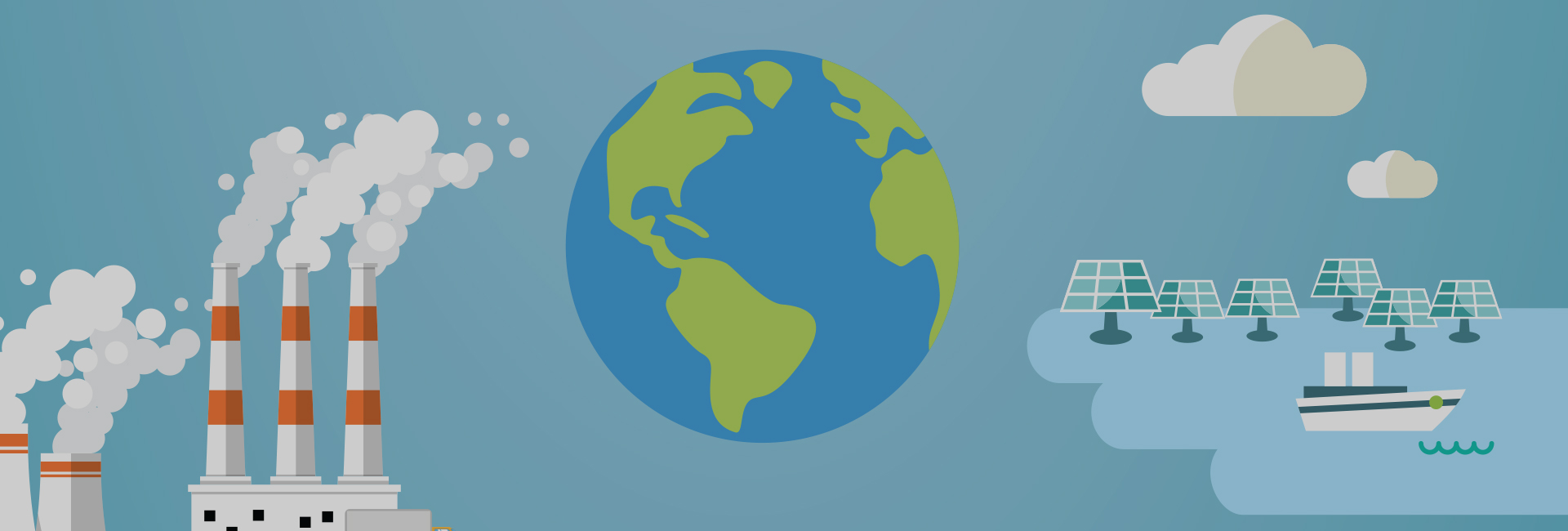
- Water, Nature and Humankind
- K-water Report
-
“Nowadays, carbon neutrality
is not a choice but a necessity!”- Written by. Choi Hang-jwa
- Source by. K-water
- Last year, we endured a summer that was hotter for a longer period than ever before. We also experienced an autumn that was so short that we didn't have enough time to enjoy the beautiful hues of the autumnal leaves. Climate is something that changes every moment, but the changes are becoming ever more drastic, as evidenced by the proliferation of droughts, floods, forest fires, and very bitter cold snaps. To address the drastic changes we are seeing in the climate, countries are pledging their commitment to carbon neutrality and participating in Earth conservation. Today, carbon neutrality is not an option but an urgent necessity. And at the center of this movement is K-water, Korea's No. 1 renewable energy company.
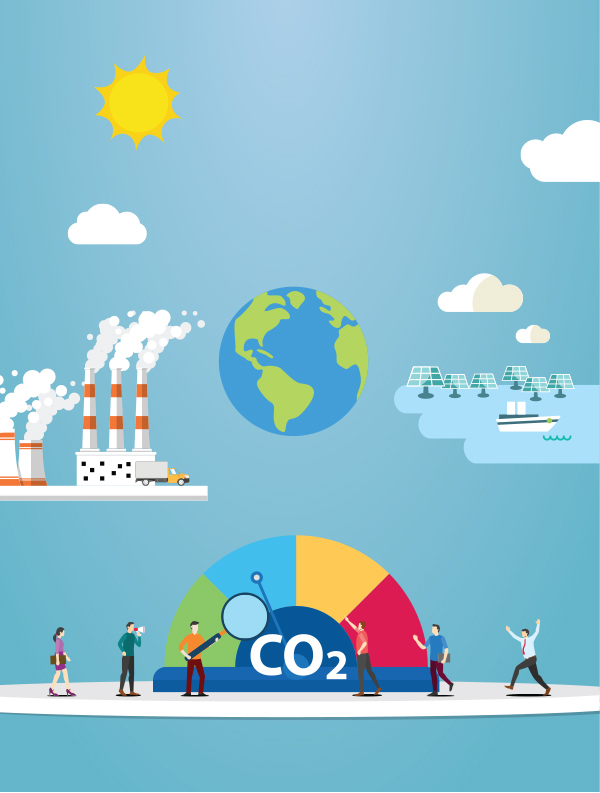
In December 2021, K-water announced the “2050 Carbon Neutrality Roadmap for Water”
Polar bears becoming an increasingly endangered species, melting glaciers, and rising sea levels are all related to global warming. The reason is that industrialization causes carbon emissions to rise, and greenhouse gas emissions raise the Earth’s temperature. "Carbon neutrality" is the goal the entire world is now focusing on to address the global warming problem. The concept and goal behind “carbon neutrality” is to keep the net carbon dioxide level at ‘zero’ by increasing the absorption of carbon dioxide until it matches the carbon dioxide emissions caused by companies and individuals. After the signing of the Paris Agreement, which came into effect in 2016, 121countries joined the "2050 Carbon Neutrality Target Climate Alliance," a momentous occasion that was heralded around the world. On October 18, 2021, the South Korean government announced the country’s "2050 Carbon Neutrality Scenario" and its "2030 National Greenhouse Gas Reduction Goals," which include the goal of reducing GHG emissions by 2030 by 40%(compared to 2018) and achieving "zero net emissions" by 2050. In response to the climate change crisis, K-water introduced the country’s first ‘2050 Carbon Neutrality Roadmap for Water’ on December 8, 2021. This document will serve as the base data when implementing carbon neutrality in the water sector as part of the fight against climate change. The roadmap's main purpose is to reduce GHG emissions during the entire water management process.
K-water has declared its vision of ‘National Carbon Neutrality over K-water Carbon Neutrality’ and set the following four main strategies △ carbon-zero water management △ expansion of water energy △ invigoration of green hydrogen as an energy source and △ formation of carbon sinks. K-water aims to reduce its GHG emissions by 780tons per year, with the aim of exceeding “zero net emissions” by 693tons by 2050.
K-water plans to pursue twelve projects including the following: supplying low carbon tap water by installing carbon emissions reduction technologies across the entire water management cycle creating net zero carbon Water Purification Plant promoting power generation from water, such as floating PV power plants and hydrothermal power generation participating in green hydrogen projects restoring dam floodplain ecologies creating waterfront ecological belts and expanding natural ecology-based carbon sinks.
K-water’s 2050 Carbon Neutrality Strategy
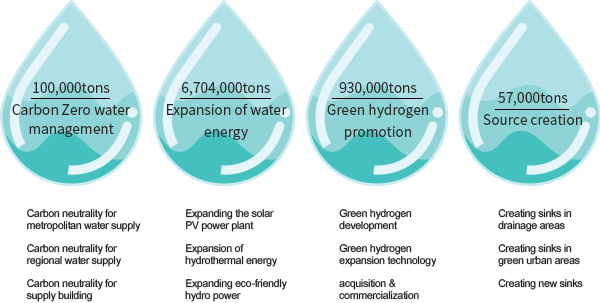
The Hapcheon Dam Floating PV Power Plant, South Korea’s largest floating PV power plant
K-water is pursuing carbon neutrality in many different ways. In fact, in November 2020, K-water became the first public company to adopt ‘climate crisis management’, and it has also been participating in the global ‘RE100’ campaign. In March 2021, we declared ESG management with the promise that we would introduce new innovations to secure the safety of public water and water welfare and to make a giant leap forward in water management. Also, at a time when renewable energy sources like floating PV power generation and hydrothermal energy generation are capturing the public’s imagination, K-water is contributing to the realization of carbon neutrality by expanding its renewable energy capacity. The total capacity of renewable energy facilities operated by K-water was 1,365MW. In 2020, these facilities produced 2,913GWh of clean energy, which is equivalent to electricity consumed by 970thousand households for a whole year and has the effect of reducing GHG emissions by about 1.34million tons. The Hapcheon Dam Floating PV Power Plant is one such renewable energy facility worth mentioning.
Hapcheon Dam is the place where the Ministry of Environment and K-water collaborated on a small-scale empirical study in 2011 before commercializing the world’s first dam installed with floating PV in 2012. At that time, the power plant generated just 0.5MW, but the Hapcheon Dam Floating PV Power Plant, which was completed in November 2021, is South Korea’s largest, wuth a capacity of 41MW.
The amount of electricity produced by the Hapcheon Dam's floating PV plant every year is sufficient to meet the needs of 60,000households. For the Hapcheon-gun district, which has 43,000residents, this is more than sufficient and in fact generates a surplus. This amount of renewable energy production is equivalent to reducing 30tons of fine dust and 26,000tons of GHG emissions every year.
When installed on the surface of water, the floating PV power plant takes the shape of a plum flower, which is the official flower of Hapcheon-gun district, blending well with the surrounding scenery. The power plant is expected to become another tourist attraction if it is linked to the ecology walking trail and Haeinsa Temple, which is a favorite tourist attraction of Hapcheon. In addition, K-water is investing in the project in partnership with the local residents, sharing the profits and contributing to the local economy by creating real jobs.
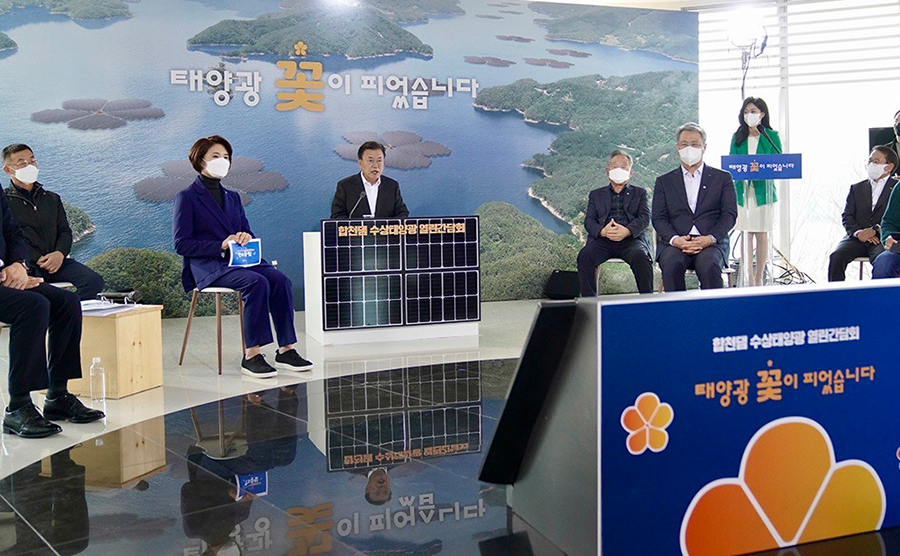
Position of floating PV solar
power business
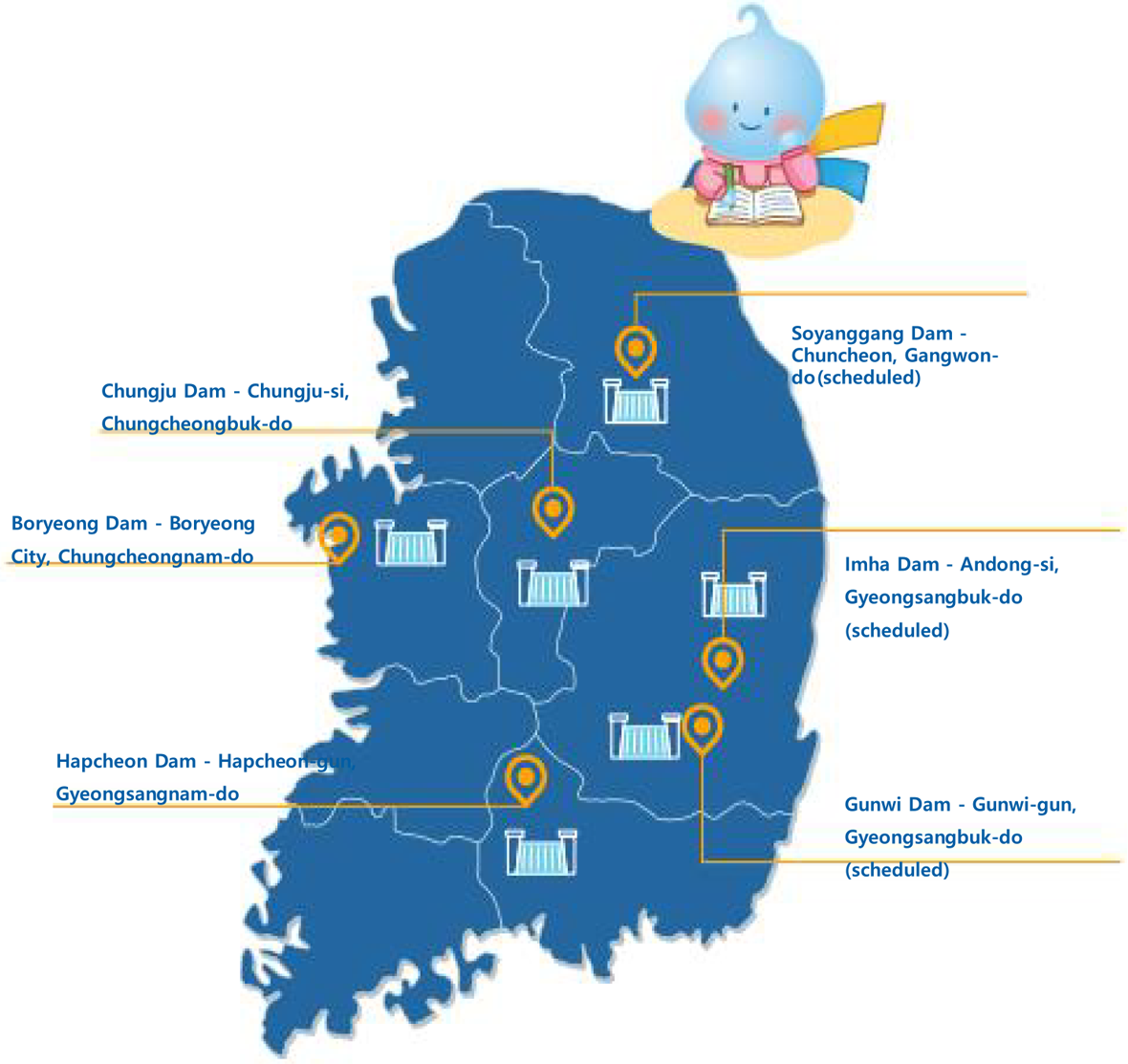

What is the floating PV solar power?
It is a facility that combines renewable energy with a marine technology in which PV modules are placed on the surface of a body of water. Usually constructed at dams or reservoirs, floating PV power plants are eco-friendly power sources.
Sihwa Lake Tidal Power Plant, the largest tidal power plant in the world
The Sihwa Lake Tidal Power Plant in South Korea is being lauded as the Mecca for achieving the goals of the 2050 Carbon Neutrality Roadmap. Roughly twelve times the size of a soccer field(138,000㎡), the Sihwa Lake Tidal Power Plant generates electricity by rotating a water turbine using the force of the water flowing into the turbine generator during high tide, as the sea level rises, and then discharging the water into the Yellow Sea in a continuously repeating cycle. It is the largest such plant in the world, with an annual electricity generation capacity of 552GWh. This is enough to satisfy the annual power needs of a city the size of Siheung(population 500,000). This amount of renewable energy production is equivalent to reducing 315,000tons of carbon dioxide and planting 5million 30-year-old Korean pine trees.
Solar power, wind power, fuel cell power, and marine PV power generation demonstration sites have already built in the vicinity of the power plant, and K-water and Ansan City are planning to construct a hydrogen power demonstration center. In addition, a demonstration system for heating and cooling using ocean thermal energy, and a building with an integrated solar PV system were completed here at the end of last year, together forming the largest renewable energy industrial cluster in the country.
Furthermore, K-water plans to reduce CO2 emissions by 1.67million tons by transforming the 43metropolitan Water Purification Plant across the country into net zero Water Purification Plant by 2030. Today, two Water Purification Plant in Siheung and Jain are operating as net zero purification plants. Also, through the Gangwon-do Ocean Thermal Energy Integrated Cluster and the Smart City Water Thermal Energy Supply Project within the Busan Eco-Delta City, K-water will develop 572,000RTs by 2030. Hence, it is expected that 2022 will become the year when K-water achieves a significant milestone in realizing carbon neutrality.
Tidal power
generation status


